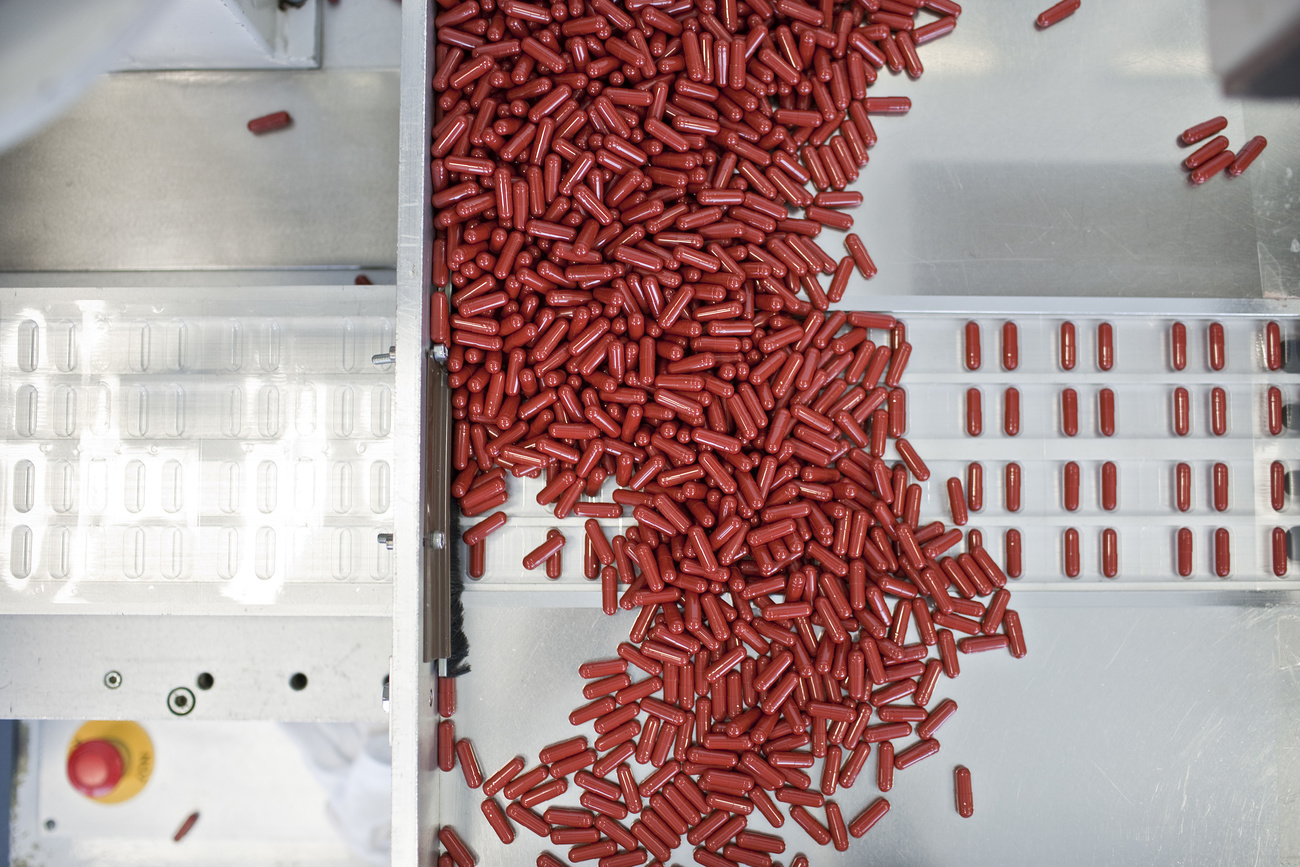
Museum offers everything but the kitchen sink

With so many prime pieces on display, the current exhibition at Zurich's Museum of Design is comparable to a "greatest hits" album.
Every Thing Design is the first show featuring material from all four of the museum’s collections, which include posters, design, applied art and graphics.
There are no kitchen sinks to be found, but coffee makers, a vegetable peeler and Tupperware® all make an appearance, as do Art Nouveau antiques, cardboard furniture, designer shoes and a poster of Barack Obama.
With 400 eclectic items on display, the exhibition looks and even smells a bit like a thrift shop – but in a good way.
The show attempts to answer the following questions: How is a design object perceived? How does this perception change over time? Why does a museum add it to its collection?
At a recent panel discussion held at the museum, an international group of experts shared their views on the subjects of design and collecting.
Pedestal space
“Placing everyday objects on a pedestal puts a distance between them and the beholder and creates a level of reverence,” according to Paola Antonelli, senior curator for architecture and design at New York’s Museum of Modern Art, MoMA. As an example, she cites a block of Post-It® notes occupying gallery space in NYC – despite the fact that anybody could run out and buy his own pack.
Yet when it comes to design, sometimes it’s the simplest concepts that garner the most admiration. The Zurich show includes the Rex vegetable peeler invented by Swiss entrepreneur Alfred Neweczerzal. First introduced in the 1940s, the stainless steel kitchen gadget is still popular today.
However, other items – such as a clunky red dictation device – were destined to become obsolete soon after their creation. As for the 1978 Commodore personal computer on display, it no longer works.
“Is it still a computer, or just a shell?” wondered panelist Annette Schindler, head of Plug-in in Basel, which specialises in new media art.
Technical difficulties
Schindler also points out the challenge of conserving multimedia design work like CD-ROMs from the late 1990s.
“It’s hard to show them on today’s operating systems, so another question is whether artists should be updating their work,” said Schindler.
Peter Noever, CEO and artistic director of the Austrian Museum of Applied Arts, the MAK in Vienna, spoke in praise of risk-taking.
He provides space for artists to do things that they couldn’t do in their own studios. A recent installation involved lumps of reddish wax being lobbed into a corner, creating a messy pile that grew by the day.
Verena Formanek, discussion chair and head of collections at the design museum, asked her guests whether museums should focus on local or global design trends.
Antonelli said she viewed the world’s museums as a network – ideally with each having its own speciality. Schindler said she believed that museums in Switzerland should focus on Swiss talent, but not within a vacuum.
Helvetica
Although Zurich is much smaller than New York, it seems that the Museum of Design has an edge on the MoMA’s department of architecture and design.
Antonelli confessed that the MoMA department is “very small”, with only 5,000 posters, 4,400 objects and about 1,200 architectural sketches and models.
In comparison, the Museum of Design has 350,000 posters, 100,000 graphics, 20,000 examples of packaging and 10,000 design objects.
Antonelli also mentioned that her colleagues back at the MoMA were currently busy acquiring a collection of fonts.
“We’ve already got Helvetica,” she smiled.
Susan Vogel-Misicka in Zurich, swissinfo.ch
Established in 1875, the Museum of Design was originally housed in the nearby Landesmuseum (Swiss National Museum).
In 1933, it moved into its current location near the banks of the River Sihl.
Designed by Zurich architects Adolf Steger and Karl Egender, the sleek building is now a protected monument.
The museum maintains an open approach to all areas of design.
Every Thing Design runs until July 19, 2009.

In compliance with the JTI standards
More: SWI swissinfo.ch certified by the Journalism Trust Initiative






































You can find an overview of ongoing debates with our journalists here . Please join us!
If you want to start a conversation about a topic raised in this article or want to report factual errors, email us at english@swissinfo.ch.